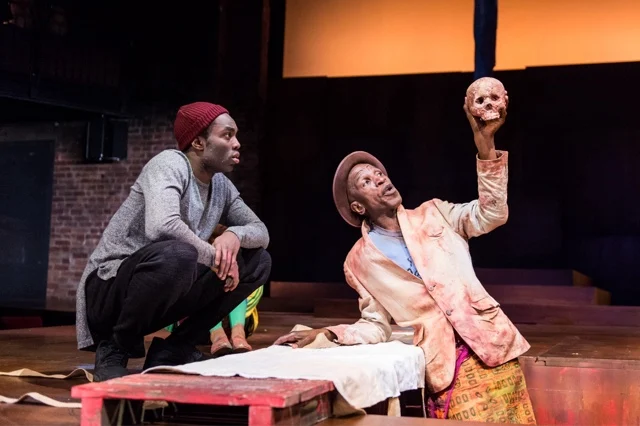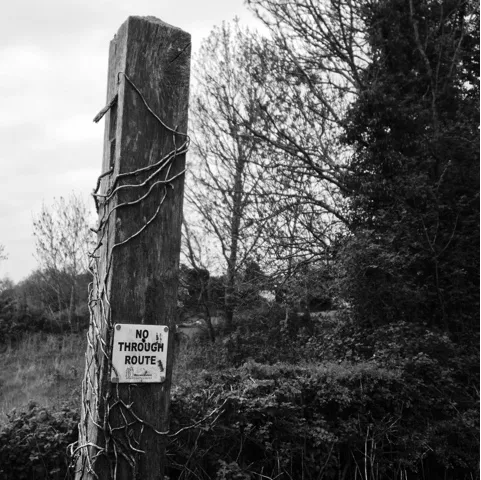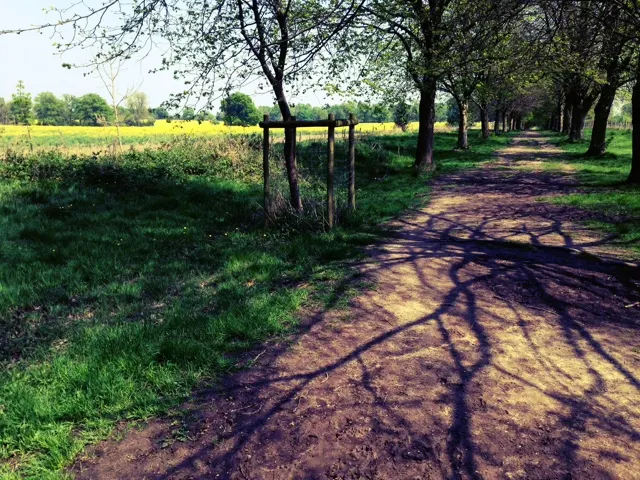The first time I heard Tamsin Waley-Cohen perform was at an Orchestra of the Swan concert in November 2011: in what was then Stratford-upon-Avon’s Civic Hall. After the orchestra had serenaded us with John Ireland’s A Downland Suite (now available on CD!), she joined them for Vaughan Williams’ rarely-performed ‘Concerto Accademico’ – “a name [Vaughan Williams] subsequently disliked, withdrawing it before a Menuhin performance in September 1952” – known latterly, simply, as the Violin Concerto (or Concerto for Violin and Strings).
I have heard her play with them many times since. And the fact that their partnership has grown so rapidly, so naturally, so wonderfully, says a great deal about the talent and conviviality of everyone involved: especially as their recordings together – including, in 2014, a jaw-dropping CD of this work and The Lark Ascending (along with a brace of similarly ravishing Elgar string-works) – are so beautifully fledged.
I was very happy when the opportunity arose to record the Vaughan Williams Violin Concerto and The Lark Ascending with the Orchestra of the Swan and David Curtis, as they were the first works we played together and we have performed them many times since.
Whilst the Lark is one of the best loved and most famous works in the repertoire, the Concerto is, rather unfairly, hardly known. It is a true “chamber” concerto, full of humour, eloquence and imbued with a rustic spirit. The outer movements have a playful wildness about them, the music darting and dancing, that make them great fun to play, and I find the slow movement a jewel of beauty and expressivity.
The slow passages, both in the second movement of the Concerto and the Lark contain a poignant nostalgia, filled with longing for remembered times. There is a strong sense of narrative, not unlike the English folk stories and older Celtic sagas which are so cyclical and rooted in the power of nature.
– Tamsin Waley-Cohen: Thoughts on recording Vaughan Williams’ Concerto for Violin and String Orchestra and The Lark Ascending
So, last night, I was delighted (actually in an almost euphoric state…) knowing that I would be hearing her perform this “hardly known” work once more; along with Mendelssohn’s equally entrancing, more famous concerto in E minor, Op.64 – again, “after the orchestra had serenaded us”: this time with the same composer’s evocative Incidental Music to ‘A Midsummer Night’s Dream’, Op.61 (and even more evocative with its original German title: Musik zu Ein Sommernachtstraum von Shakespeare…).
To be honest, it felt like we needed a little such evocation: there being an autumn chill in the air as I walked through Priory Park to Malvern’s Forum Theatre for the pre-concert talk. And I was reminded of Curtis’ command – before the first, Mediterranean-flavoured event in this series (with guitarist Craig Ogden), in February – “to dream of wine and olives…”. In the end, though, such instruction, last night, would have been unwarranted: the music was consistently soul-warming, and filled with passion from start to finish!
¶
Written for violin and string orchestra, this is Vaughan Williams’ homage to the Bach Concerto for Two Violins: a work he loved so much, he requested they play it at his funeral (and they did). The work has the same rhythmic vigour and forward impulse as its model, and curiously anticipates Hindemith’s mature neo-classical manner.
– Steve Schwartz: Ralph Vaughan Williams: Concerto Accademico in D
That description, along with its original title, might lead you to anticipate something a little dry – or even austere. But such expectations would have taken you – especially with these forces – very far from the mark. Many writers tell us that it is only in the central Adagio that we will be reminded of that famed bird “climbing, spiralling, fluttering towards the sun…”. But – and maybe this stems from my greater familiarity with the work; or, more likely, five years of immersion, development, and even greater understanding from Curtis and Waley-Cohen – I felt its presence more in the opening Allegro pesante.
As discussed in that pre-concert talk, Waley-Cohen’s soundscape has deepened and widened – as it will, I believe, always continue so to do… – and thus, having “managed to eke out yet more exquisiteness” in her recent astounding performance of The Lark Ascending at Holy Trinity Church – “her tone, sublimely matched to the music, ranging from hushed earthiness to a beatific, soaring, incommunicable luminosity” – I felt that she brought that experience to bear here. There was an astute lyricism weaving its way through all that contrapuntal intensity; and it felt as if the movement ‘breathed’ more – more easily – as a result. There was space for emotion, as well as technique – both of which shone brightly. (And the orchestra were her equals.)
And yes, of course that Adagio is “dreamy and relaxed in mood, and features mostly delicate, triadic harmonies” – and, in being so, is the equal of the greatest, most intense, most romantic, of Bach’s slow concerto movements. But I feel the bird may have returned to its nest, and be bathing in the ensuing sunshine, rather than flapping frantically upwards toward it, or even parachuting downwards.
The more I hear this profound centrepiece, the more it insinuates its way into my soul. On the cusp of chromaticism – as Waley-Cohen pointed out – it also defines a new, more modern type of beauty (especially for Vaughan Williams): bringing to mind the greatest sculptures of Henry Moore or the natural forms of Barbara Hepworth. For me – despite the undoubted joys that followed – this was the high point of the evening (even if the skylark was grounded, momentarily…).
The Presto finale opens with a theme that is pure Vaughan Williams, a jig tune taken from Act II, scene 2 of his opera, Hugh the Drover (1910‑14), which had premiered in July 1924, shortly before the composer began work on this concerto. At less than four minutes, this is the shortest movement, but its bustling energy never flags, its folk-like spirit permeating the whole movement, leaving relatively little to identify with Bach. In the end, this concerto must be assessed a masterpiece, perhaps a major masterpiece.
– Robert Cummings: Violin Concerto in D minor (“Concerto Accademico”)
¶
The six movements extracted from Mendelssohn’s version of A Midsummer Night’s Dream began with the original Overture (which went on to inspire the later incidental music). I thought the initial, suspended flute notes – unusually – were just a tad hesitant. (From my perspective, this looks like a tough, hushed opening to pull off – followed as it is by sprightly violins scurrying quietly through the air.) But, soon, all was well, and – despite me having always assumed it was impossible to play the trumpet or oboe and smile simultaneously – everyone in the room was grinning from ear to ear!
Mendelssohn was an undoubted genius (as well as a phenomenal pianist and violinist, as Waley-Cohen reminded us). That he produced his first violin concerto – not the one I’ll be singing for the next week: but the one that these selfsame forces have recorded (and which is recommended in the BBC Music Magazine’s current issue, Curtis proudly informed us…!) – when still in shorts; followed it not much later with a string octet that has never been beaten; wrote some great oratorios; magnificent symphonies; and some of the best piano pieces I have ever managed, fumblingly, to play – all before dying at a stupidly young age (not much older than Mozart, indeed) – should be evidence enough. But anyone who can transform an orchestra into a braying donkey must rank amongst the very greatest composers of all time!
This is fantastic music: descriptive, joyous, beautiful stuff – and Curtis and the orchestra went for it with every chunk of gusto they could muster (which was a lot – they measure out such matter not with coffee spoons, but with buckets). In fact, Curtis seems to have developed a new artistic gesticulation for such moments: one which simply indicates that everyone on stage should give it as much welly as they possibly can (if not a little more). This was not a one-off. Later, in Mendelssohn’s Violin Concerto, after the interval, he turned to the cellos, and repeated this new gesture… – Nick Stringfellow being my hero of the night: firstly for his beautiful solo in the Vaughan Williams; and secondly, for then not falling off his chair…!
There was superb playing from all quarters: my favourite being the ‘song without words’ for the horn in the Notturno. But the return of “the hee-hawing of Bottom disguised as a donkey” (as Christopher Morley wrote in his typically excellent programme notes) in the final Dance of the Clowns is just so riotously funny! The perfect way to take us from the sublime to the not-quite-ridiculous; and to end a glorious first half.
¶
In the pre-concert talk, Waley-Cohen had been asked about the “edge of the seat stuff”: the visual impact that is as much of the essence of a great live performance as that “soundscape”. (“Sound is all we have. It is how we communicate.”) There were many moments in the latter concerto where I could quite easily have switched off my hearing aids and still known how deeply invested in this music both she and Curtis were, though. Even in the extremely rare moments when she is not playing, she is there with the orchestra, immersed with them, part of them; and Curtis’ body language is also balletic, and quite beautiful to watch.
Come the fireworks, there is a muscular intensity, though, from Waley-Cohen, that demonstrates not – as with many performers – that we are to note that this is a particularly difficult bit; but that she is giving it her all – especially emotionally. This does not distract; it heightens our involvement, as well. For me, it almost felt like a private performance, such is the focus this potency promotes.
Even knowing already how brilliant she is, has become, this rendition took my breath away. The planets aligned – as did Waley-Cohen, Curtis and every single member of the orchestra – to produce something simply perfect; and yet utterly unique. Only now, recalling its magic, does it prompt tears. (It is hard to cry when you have stopped breathing for so long.)
The repeated calls back to the stage; the extended thunderous applause; the loud cheers; the reverberating foot-stomping; Curtis’ habitual retreat to the background to force Waley-Cohen to acknowledge the miracle she had wrought… – let’s just say Mendelssohn will be smiling, tonight: as I did all the way home. And still am. Wow.



































